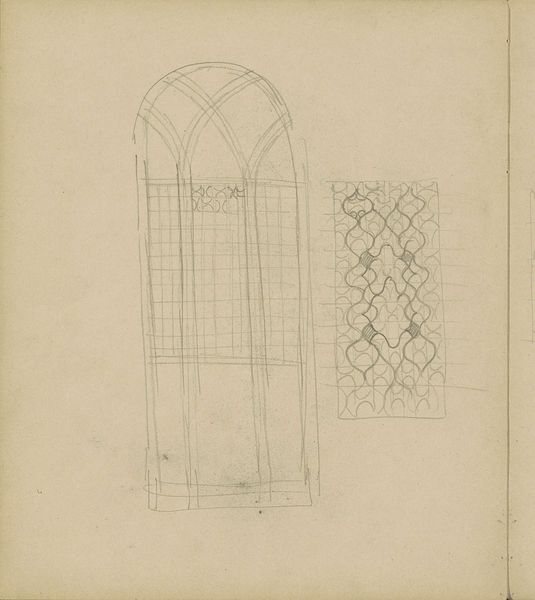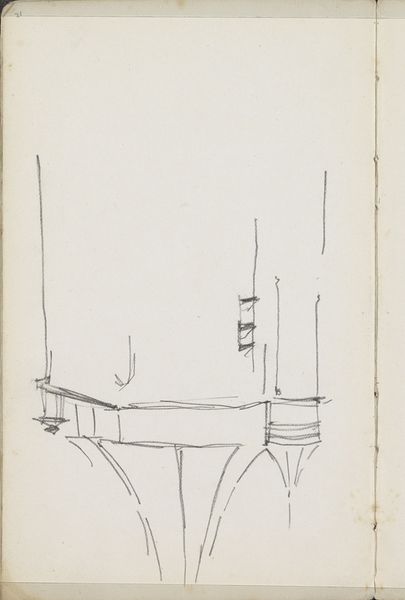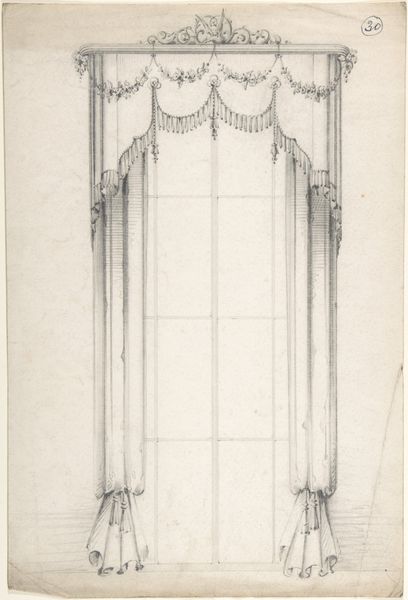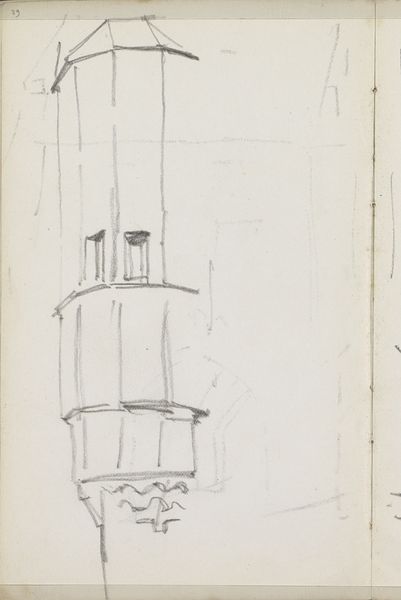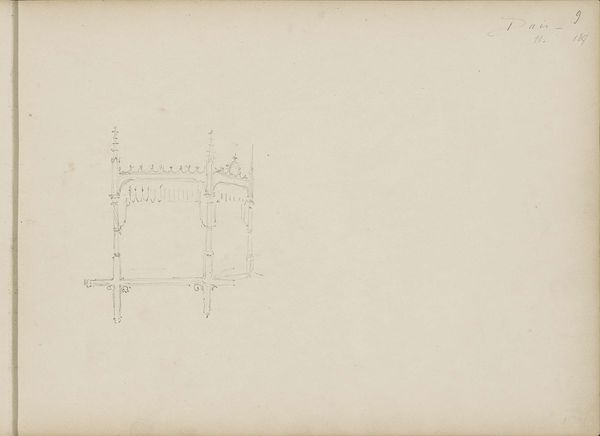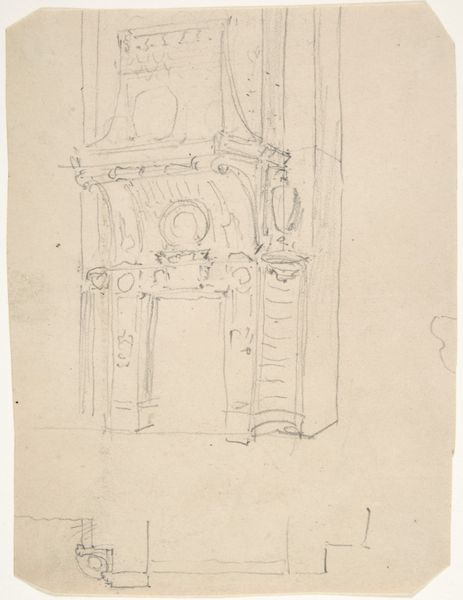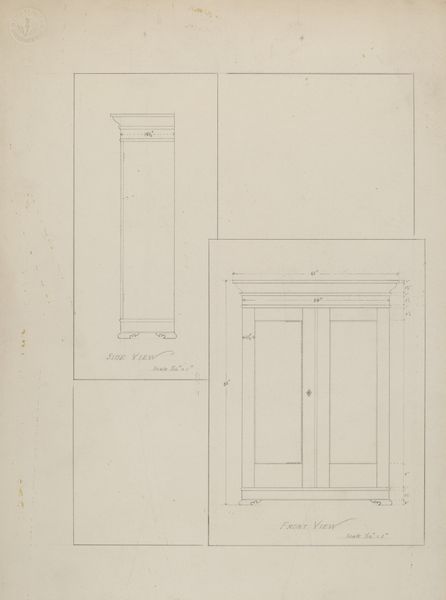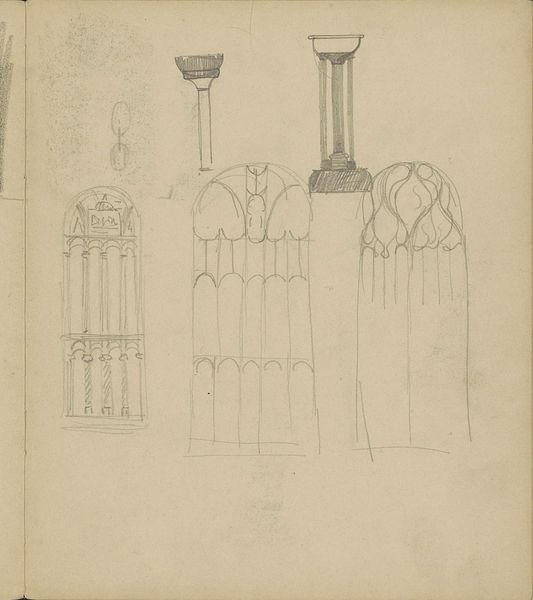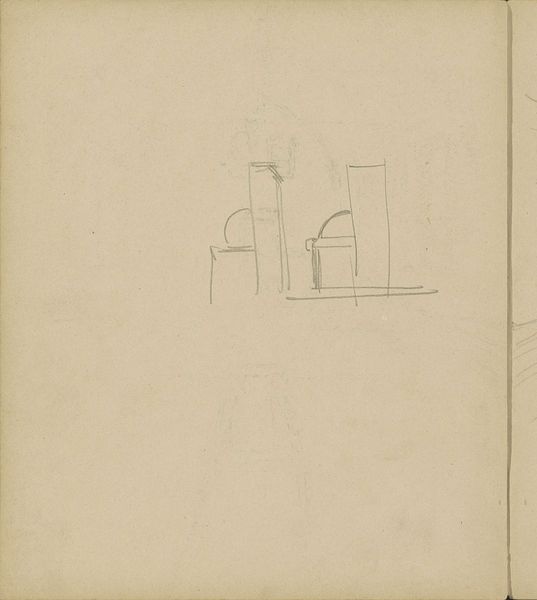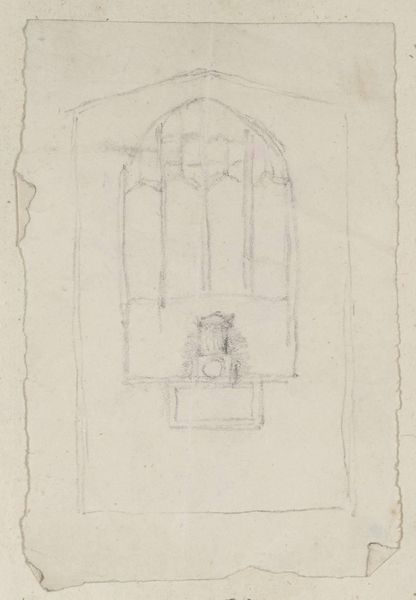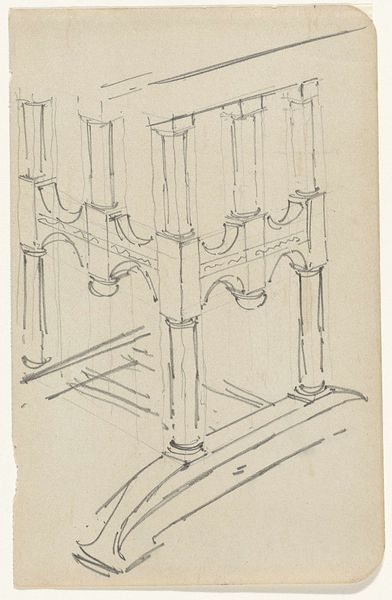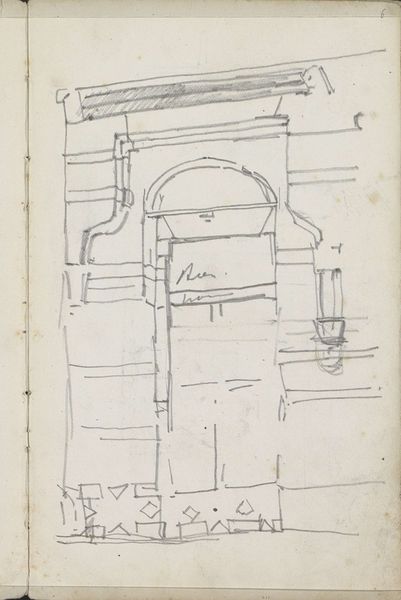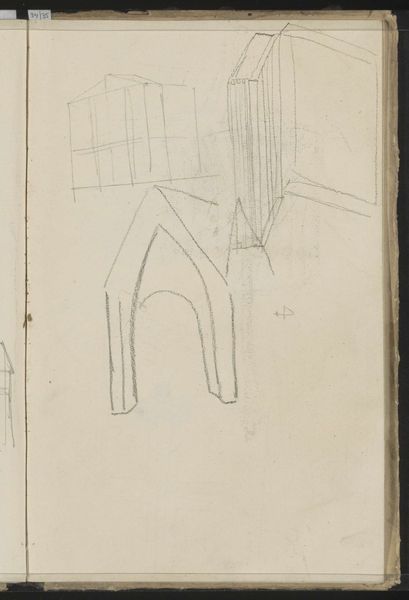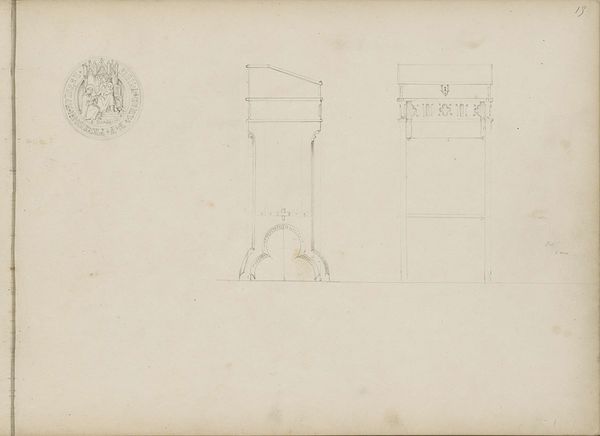
drawing, pencil, architecture
#
drawing
#
aged paper
#
toned paper
#
light pencil work
#
homemade paper
#
old engraving style
#
sketch book
#
form
#
personal sketchbook
#
idea generation sketch
#
sketch
#
pencil
#
line
#
sketchbook drawing
#
sketchbook art
#
architecture
Copyright: Rijks Museum: Open Domain
Editor: This is "Wandbetimmering en een kerkraam" or "Paneling and a church window" by Carel Adolph Lion Cachet, from around 1905-1906. It's a pencil sketch. I find it so simple, almost like a technical drawing. What do you see in this piece, considering its time? Curator: Well, beyond the surface of a simple architectural sketch, I see a reflection of early 20th-century anxieties and a negotiation with tradition. Cachet, as an artist working during a period of immense social change, was likely grappling with how to represent sacred spaces and domestic life. How does this sketch engage with power dynamics and access? Does it offer insights into the religious or class affiliations of the patrons or the artist himself? Editor: I hadn't considered that. I was mainly focused on the architectural details. Curator: Exactly! Now, consider the placement of the window. Light was of course crucial to stained glass. In the larger historical context, is it simply a pretty form or does this sketch speak to themes of revelation, enlightenment, or perhaps exclusion? Thinking about Cachet and the rise of modernist movements...what might these traditional architectural forms have symbolized to him? Editor: So, by sketching it, he's not necessarily celebrating tradition? Curator: Precisely. Perhaps he is questioning it, documenting it before it disappears, or trying to understand it. What are your feelings regarding the emptiness surrounding these forms? Is it inviting? Austere? Limiting? The framing itself has social and philosophical implications. Editor: That's fascinating! I always thought sketches were just preliminary studies, but there is more in there. Thanks! Curator: It highlights how even seemingly simple sketches can offer valuable insights into social and historical power dynamics of their time, pushing us to engage with broader, intersectional narratives. I've learned from you to question my own assumptions regarding the intended message versus the potential interpretations stemming from social location.
Comments
No comments
Be the first to comment and join the conversation on the ultimate creative platform.
